The Historic Sliver Lecture from Vienna goes Live
The infamous Sliver Lecture series of the University of Applied Arts in Vienna will be held online this semester. SCALE spoke to the curators Maja Ozvaldic and Kaiho Yu to learn about the series and its history. By Joana Lazarova
 Mixed Tape is a series of lectures and works compiled by members of the faculty of the Institute of Architecture (IoA) of the University of Applied Arts in Vienna who have contributed with their professional interests and pedagogical objectives. Known for its historical context and the exemplary line of lectures and personalities, Sliver Lecture Series will be online this year thereby throwing open the series, for the world to watch. Curated by Maja Ozvaldic and Kaiho Yu, this year is going to be exceptional in its format and for the IoA.
Mixed Tape is a series of lectures and works compiled by members of the faculty of the Institute of Architecture (IoA) of the University of Applied Arts in Vienna who have contributed with their professional interests and pedagogical objectives. Known for its historical context and the exemplary line of lectures and personalities, Sliver Lecture Series will be online this year thereby throwing open the series, for the world to watch. Curated by Maja Ozvaldic and Kaiho Yu, this year is going to be exceptional in its format and for the IoA.
“The audience is an important part. We used to sit in the windows, currently, we have to sit in front of Windows. There is something special about people coming together, sitting in a room together, and the energy that builds up. We moved into the digital domain due to necessity, and we are still figuring out how we can make it more interactive, how to transfer this energy. On the other hand, there is a certain informality that comes with it, which encourages the audience to get more involved,” believes Maja Ozvaldic.
Joana Lazarova: Looking back over the history of the IoA (Institute of Architecture), the Sliver lecture series has always been electrifying. Over the years, many visionary people, role models in architecture as well as in other fields, have participated in them. How did it come about?
Maja Ozvaldic: The IoA Sliver lecture series was initiated in 2007, under the direction of Wolf D Prix, and was co-created by Kristy Balliet, Alexandra Graupner, and Brennan Buck. The name itself was heavily debated and often misspelled as “silver” (my autocorrect is still trying to change it). The lecture series was set to be a slice of and in line with the “pulse of time”, or even more ambitiously, to be contributed to by exhibiting particular agendas that were of interest to the curriculum and the mission of the IoA. So, it started as a platform that drew from the interwoven networks of the teachers at the institute and thereby started to spin a web between Vienna, Europe, and the rest of the globe.
I was still a student at that time and remember the too-small Lichthof, with students sitting in windows spanning three floors in order to listen to the lecturers who passionately talked about their work. Yes, electrifying.
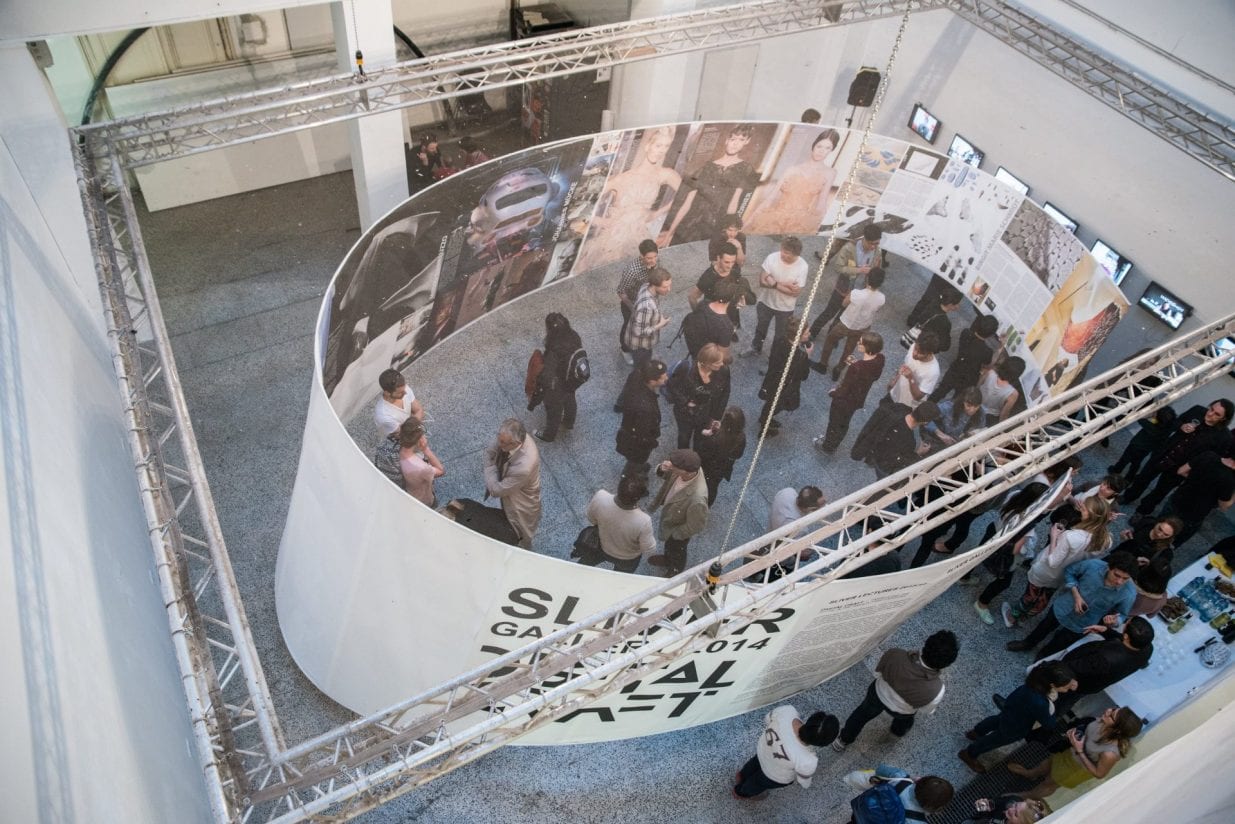
Digital Craft: Fabricating the Virtual in the 21st Century, Institute of Architecture, Sliver Gallery, 2014. Die Angewandte.
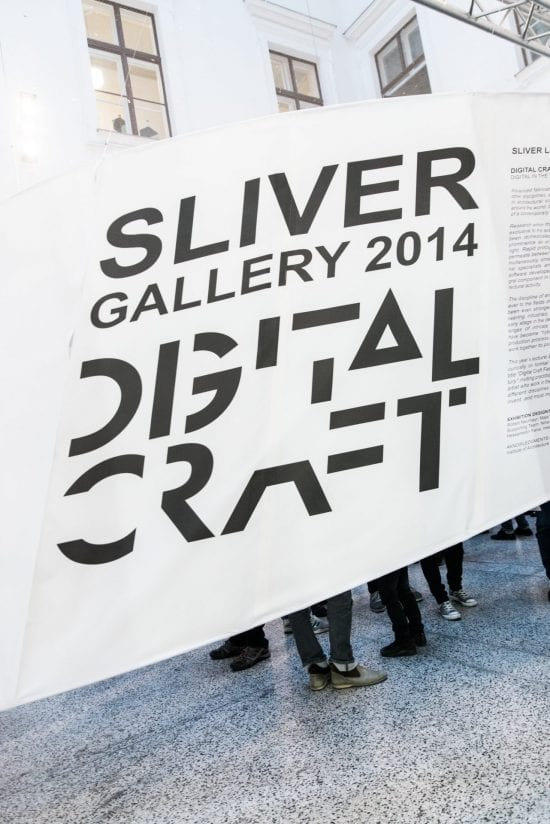 The lecture series was also accompanied by the Sliver Gallery, housed inside the Lichthof at the Ferstel-Trakt of the Angewandte. The gallery gave an opportunity to the junior faculty to exhibit architectural experiments on a pavilion scale. It also facilitated exhibiting academic work, which was developed inside the design studios and at the institute at large. In addition, it was utilized to complement a current edition of a lecture series, by exhibiting alumni design work relevant to the topic of the series, as the last exhibition Digital Craft did.
The lecture series was also accompanied by the Sliver Gallery, housed inside the Lichthof at the Ferstel-Trakt of the Angewandte. The gallery gave an opportunity to the junior faculty to exhibit architectural experiments on a pavilion scale. It also facilitated exhibiting academic work, which was developed inside the design studios and at the institute at large. In addition, it was utilized to complement a current edition of a lecture series, by exhibiting alumni design work relevant to the topic of the series, as the last exhibition Digital Craft did.
Joana Lazarova: Wolf D Prix was dean of the IoA at that time?
Maja Ozvaldic: Yes, Wolf D Prix was the dean of the institute from 2002-2011, Zaha Hadid joined in 2000, and Greg Lynn joined in 2002. In 2011, Hani Rashid followed up the retired Wolf D Prix and Kazuyo Sejima was appointed as the successor of Zaha Hadid and Patrik Schumacher. Last year (2019) the same studio went to the hands of Cristina Díaz Moreno and Efrén GarcíaGrinda / amid.cero9. Having internationally successful architects teaching in Vienna connects the Angewandte to the global architectural discourse. The school has built up a strong legacy ever since its start in 1867. The architectural department, for example, hosted the co-founders of the Viennese Secession, such as Josef Hoffmann, who joined in 1899. Later, architects like Wilhelm Holzbauer and especially Hans Hollein connected the school to the international architectural scene. But the final global dimension was initiated by Wolf D Prix, who had been teaching at Die Angewandte since 1990 or 1993, not sure.
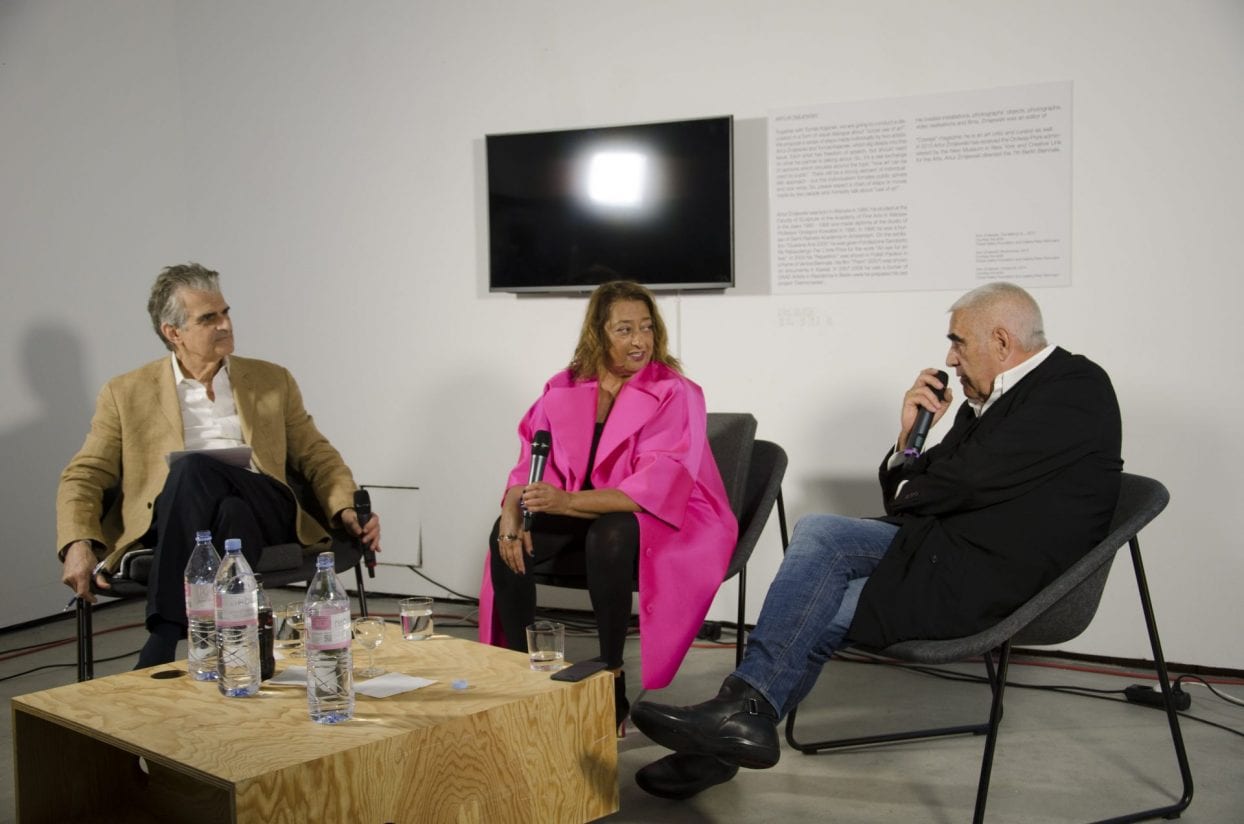
Art and Architecture in Conversation, Zaha Hadid and Peter Noever, moderated by Joseph Giovannini, 2015, Institute of Architecture, Die Angewandte.

Art and Architecture in Conversation Hadid / Noever, moderated by Joseph Giovannini, 2015, Institute of Architecture, Die Angewandte
Wolf D Prix extensively contributed to building up the Anglo-American connection. Bringing global expertise to the Angewandte enriched the entire architectural landscape in Vienna, which from its start in the modern movements has been a vivid one (although due to the European geopolitical developments of the 20th century up to the turn of the next century, Vienna has been more successful in exporting its own intellectual capital than in importing any).
Joana Lazarova: I was going through the Sliver online archives, and it was kind of obvious to me that we can see history in the making there. That’s quite fascinating.
Maja Ozvaldic: Sliver is now 13 years old and it is exciting to continue developing it, not only in terms of topics but also in terms of its formats. It has gone through many hands in its time and I would agree that one can trace the ideas and aspirations of the IoA´s pedagogy, as well as the people who participated in shaping it, by going through the Sliver lectures archive. What the archive also shows is an interest in having an exchange not only among architects but also in seeing architecture in dialog with culture. In doing so, its guest list includes architects, artists, designers, critics, and theoreticians. A special edition emphasizing this interconnection was “Art and Architecture in Conversation”, where we invited artists to get into a conversation with our teaching architects and theoreticians. Changing the formats from lectures to dialogs to discussions is fascinating because each format involves the audience in a different way. Each format also differs in terms of accommodating the emergence of something unexpected, especially when the participants are from different disciplines.
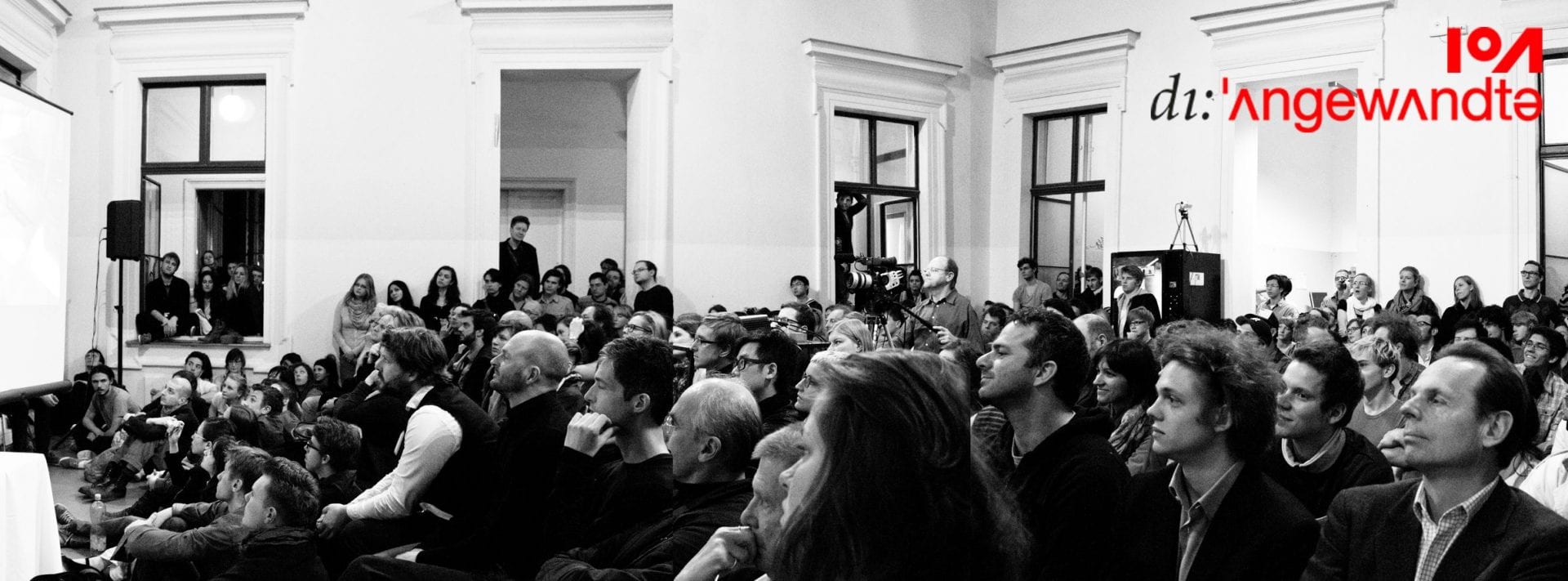 In 2017, when the Angewandte celebrated its 150th anniversary, Sliver held its 10th edition and devoted the whole year to alumni. Together with Indre Umbrasaite and Bence Pap, we set up a series of panel discussions to discuss work, ideas, and experiences with the current student body. These were quite fantastic events because they showed the real challenges and positions experienced and occupied by our graduates (in architecture and beyond) and at the same time allowed for a reflection on the pedagogy over the course of 30 years. These events served as the foundation for a book, which we published with Birkhäuser this year, called Positions: Unfolding Architectural Endeavors (2020).
In 2017, when the Angewandte celebrated its 150th anniversary, Sliver held its 10th edition and devoted the whole year to alumni. Together with Indre Umbrasaite and Bence Pap, we set up a series of panel discussions to discuss work, ideas, and experiences with the current student body. These were quite fantastic events because they showed the real challenges and positions experienced and occupied by our graduates (in architecture and beyond) and at the same time allowed for a reflection on the pedagogy over the course of 30 years. These events served as the foundation for a book, which we published with Birkhäuser this year, called Positions: Unfolding Architectural Endeavors (2020).
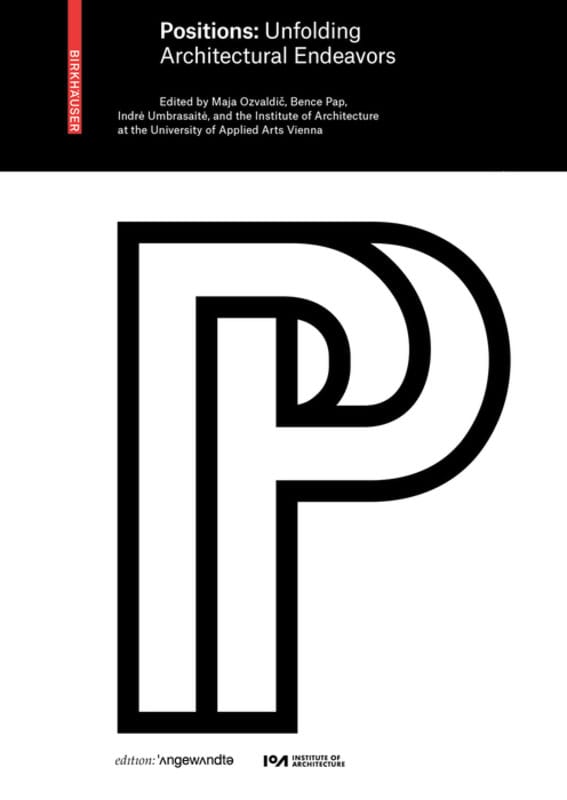
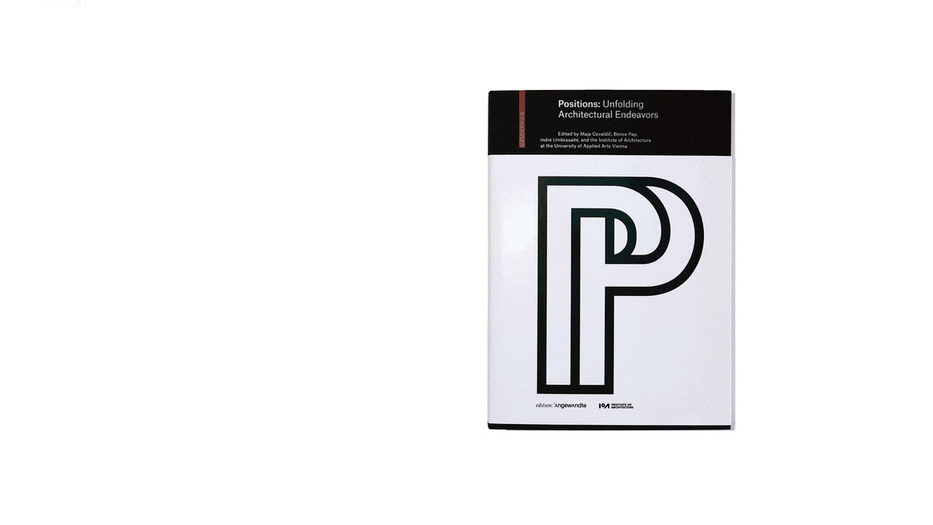 Positions: Unfolding Architectural Endeavors, Ed. by Ozvaldič, Maja / Pap, Bence / Umbrasaitė, Indrė / IoA Institute of Architecture, 2020.
Positions: Unfolding Architectural Endeavors, Ed. by Ozvaldič, Maja / Pap, Bence / Umbrasaitė, Indrė / IoA Institute of Architecture, 2020.
Joana Lazarova: Entitled “Mixtape”, this year’s edition encompasses a very versatile selection of lecturers. What influenced you when you started curating it?
Kaiho Yu: Since 2007, the Sliver lecture series has become such an important platform for our institute to embrace new ideas as well as to reflect on some current discussions related to the discipline, and this is still our mission. For this year, as we are all more or less influenced by the global pandemic and had to stay distant from each other physically, we decided to formulate the lecture as a “mixtape”, literally like the cassette tapes we used to make with our favorite tracks and send to friends at Christmas time. The concept of “Mixtape” is to make this lecture series a shared channel that represents our professional interests and pedagogical objectives across the institute.
When Maja and I were preparing “Mixtape”, we sent out an email to our faculty members asking for recommendations and ended up receiving a long list for the lecture line-up. Then the curatorial work we did, which is really difficult in terms of selecting, was meant to reflect the current interests of our three studios and departments in different formats.
Joana Lazarova: I wanted to go back to the 2010 edition. If I remember correctly, it was about “Selected Friends and Enemies”, without explicitly defining who’s a friend and who’s an enemy. I thought it was very thought-provoking, and a subject that is still relevant today in the architectural community.
Maja Ozvaldic: “Massive Attack” was another memorable Sliver moment, which was also published as a book edited by Wolf D Prix and Kristy Balliet and co-edited by Alexandra Graupnerand RoswithaJanowski-Fritsch (Massive Attack IoA Sliver Lecture Series: Selected Friends and Enemies by Birkhäuser). In its introduction, Wolf D Prix describes two kinds of architects: the “betrayers” and the “partisans” (resistance fighters). The difference can be seen in this quote: “Reality does not create us, we create reality”. This might be seen as a provocation, but I would say it is also about a general attitude (towards the discipline and life itself), and in these terms, his generation of architects grew up in a very specific zeitgeist, when there was time to put it all into question and fly to the moon at the same time.
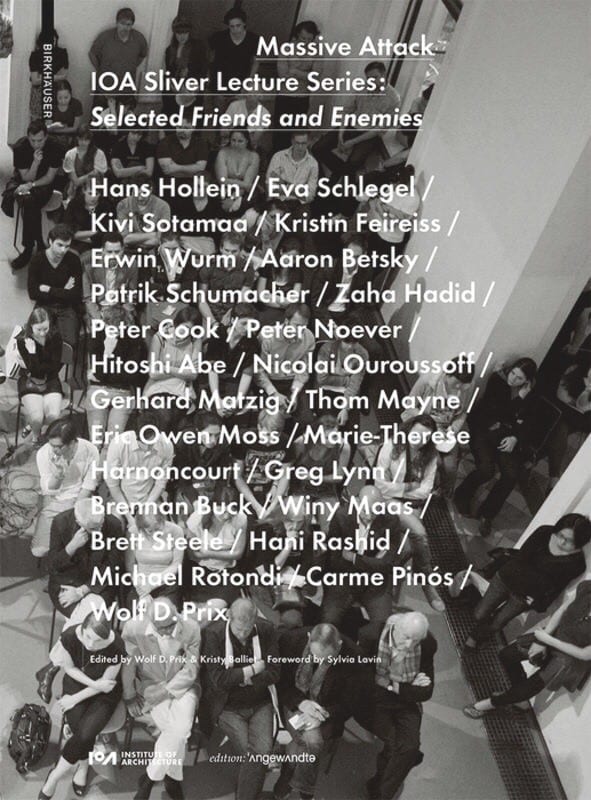
Massive Attack: IoA Sliver Lecture Series: Selected Friends and Enemies, Ed. By Wolf D Prix / Kristy Balliet, Birkhäuser 2015.
What would happen if every architecture student became a resistance fighter? Besides the dilemma of choosing which resistance to join, I guess architects might gain back more agency in building a reality and resist falling into the service industry. Beatriz Colomina said: “Discipline can be changed the way it is taught.” Wolf D Prix knew that and the IoA still follows this principle.
Joana Lazarova: To come back to this year’s edition, can you tell me more about “Mixtape”? The series starts with Marrikka Trotter on October 22 and Julien Lanoo on November 5, followed by lectures from StefanaParascho, Jesper Bork, Lev Manovich, Andres Sevtsuk, and AmaleAndraos. It’s a sort of convergence of the realms of architecture, arts, and theory.
Kaiho Yu: Marrikka Trotter directs the History and Theory Department at SCI-Arc. This position is very crucial to the discourse of the school, it was previously held by Todd Gannon, and a lot of discussions, as well as conversations throughout the faculties, were also held by Jeff Kipnis before Marikka joined SCI-Arc. So, I think she has taken this position, in a way, to frame a conversation or activate more dialogues between different voices in the school.
Julien Lanoo’s work focuses on the spatial relationship with urban and infrastructural ideas, as well as a kind of humanistic approach towards looking at environment, culture, and beauty. It’s interesting for us to hear about how to frame beauty and how to activate ideas when we are thinking about design. This approach is in line with that of one of our departments, [applied] Foreign Affairs, and this subject will foster a dialogue within the institute.
Maja Ozvaldic: Architecture is not only building per se – although we mostly operate on a building or city scale – and it’s important to connect it with the development of the human being as such. Therefore, another take on (digital) culture, at the intersection of media studies, data science, and aesthetics, will be offered by the amazing Lev Manovich.
For a design school it is just as interesting to look at the contemporary design methods architects develop and Stefana Parascho, with her expertise in robotic fabrication, and Andres Svetsuk, working at the intersection of urban design and technology, will add to this on different scales. Jesper Bork (3XN) and Amale Andraos (WORKac) will contribute with their rich repertoire of built work and their agendas for the future of the built reality. Amale Andraos is also the dean of Columbia GSAPP in New York and we are very honored to have her taking part.
In the “Mixtape” series, we are trying to look at architecture from the perspectives of people who operate on different fronts. We wanted to embrace this year’s edition as a compilation of very diverse types of lecturers, in order to open up the discussion and bring new, important subjects to the surface.
More about the program: http://i-o-a.at/sliver/




